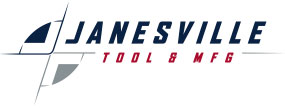What Are The Main Differences Between Pneumatic Presses, Hydraulic Presses and Hydro-Pneumatic Presses?
 Back to Top
Back to Top
Presses are essential tools across industries, used for applications ranging from small-scale precision tasks to heavy-duty manufacturing. Hydraulic, pneumatic and hydro-pneumatic presses each serve distinct purposes. Understanding their differences can help you determine the best solution for your needs
What is a Pneumatic Press?
Pneumatic presses use pressurized air or gas to generate force and are used in place of manual presses for more power or speed. The air enters a cylinder, pushing the press downward to complete the task. Once finished, the air is released through valves and the springs return the press to its starting position.
Advantages of Penumatic Presses
- Capable of handling tougher materials and high-pressure tasks
- Reliable for repetitive pressing operations
- Suitable for a wide range of applications
Disadvantages of Penumatic Presses
- Slower operation than pneumatic presses
- Higher maintenance requirements due to oil systems
- Requires devices to monitor pressure and efficiency
Common Applications
- Assembly
- Stamping
- Die Setting
- Crushing & forming metals
- Punching
- Shearing
- Embossing
Learn more about our hydraulic press solutions.

What is a Hydraulic Press?
Hydraulic presses rely on liquid (typically oil) to create pressure. A piston forces the liquid into a chamber, applying pressure to a baseplate or another piston to generate force.
Advantages of Hydraulic Presses
- Capable of handling tougher materials and high-pressure tasks
- Reliable for repetitive pressing operations
- Suitable for a wide range of applications
Disadvantages of Hydraulic Presses
- Slower operation than pneumatic presses
- Higher maintenance requirements due to oil systems
- Requires devices to monitor pressure and efficiency
Common Applications
- Assembly
- Punching
- Stamping
- Shearing
- Die setting
- Embossing
- Crushing & forming metals
Discover our hydro-pneumatic press options today.

What is a Hydro-Pneumatic Press?
Hydro-pneumatic presses combine the best features of hydraulic and pneumatic systems. They use compressed air for speed and hydraulic oil for greater force. This hybrid approach makes hydro-pneumatic presses versatile for various industrial tasks.
Advantages of Hydro-Penumatic Presses
- Greater force capabilities than traditional pneumatic presses
- Faster operation and retraction due to compressed air
- Lightweight and compact design
- Lower energy consumption, up to 50% less than hydraulic presses
- Minimal maintenance with simple sealing and pneumatic components
Disadvantages of Hydro-Penumatic Presses
- Higher upfront costs due to advanced technology
- Less precision compared to traditional pneumatic presses
Common Applications
- Assembly
- Stamping
- Die Setting
- Forming metals & plastics
- Punching
- Shearing
- Embossing
Discover our hydro-pneumatic press options today.

Choosing the Right Press for Your Needs
Selecting the right press depends on your specific requirements:
- For precision and high-speed tasks: Pneumatic presses are ideal for light assembly and repetitive operations.
- For heavy-duty and high pressure applications: Hydraulic presses excel at handling tougher materials and high-force tasks.
- For a balance of speed and power. Hydro-pneumatic presses provide an efficient hybrid solution for versatile industrial use.
Contact Janesville Tool for more info or explore our inventory of arbor presses.
| Feature | Pneumatic Press | Hydraulic Press | Hydro-Pneumatic Press |
|---|---|---|---|
| Power Source | Pressurized air or gas | Pressurized hydraulic oil | |
| Best For | Precision, high-speed operations | High-force applications, tougher materials | Hybrid tasks requiring both speed and power |
| Speed | Faster than hydraulic presses | Slower than pneumatic presses | Faster approach and retraction |
| Force | Limited to lower pressures | Capable of extremely high pressures | High force capacities beyond 2 tons |
| Maintenance | Low maintenance due to dry air usage | Requires frequent monitoring of oil and components | Easy maintenance with simple sealing and pneumatic parts |
| Cost | More affordable | Higher production and maintenance costs | Higher upfront cost but energy-efficient |
| Suggested Model | ? | ? | ? |
 Made in the USA
Made in the USA